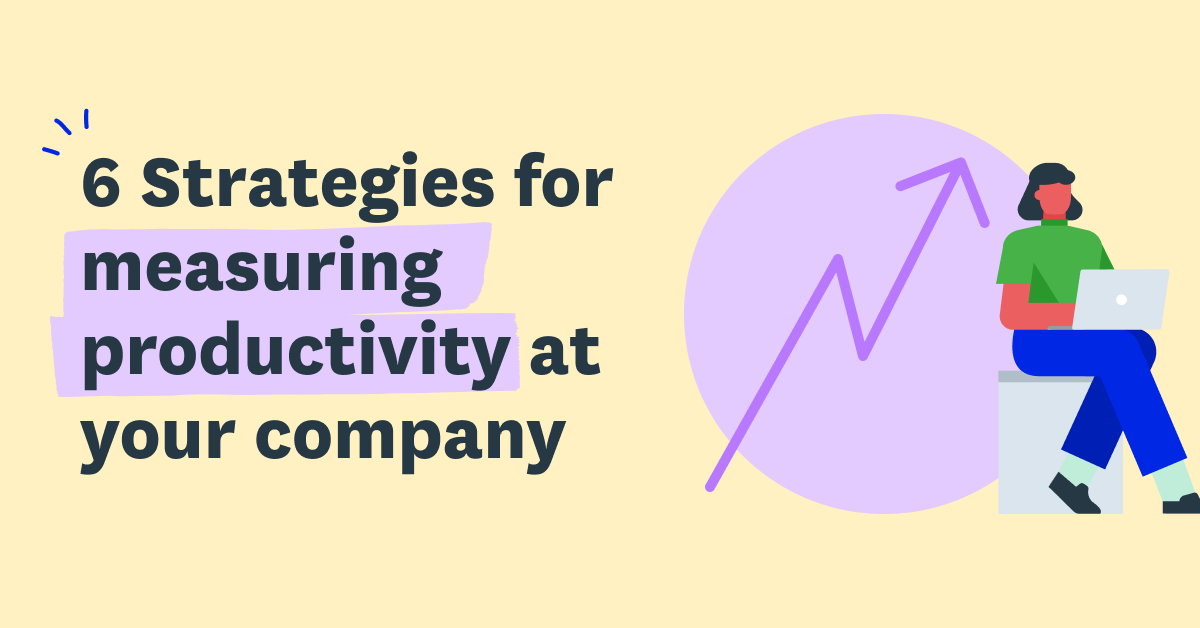With today’s technology, business owners can record, track and report on every activity in their job cycle.
But with all this visibility comes questions. What should you be tracking? Which data is most valuable to you? What should you be doing with all this information you’re collecting? Nowhere are there more questions than around effectively measuring productivity.
‘Productivity’ can seem like a bit of a buzzword. You know that improving productivity can be a key to improving revenue, but what exactly does that mean? In this article, we look at different methods to measure that elusive productivity, manage your time, and offer some ideas for implementing these strategies at your own company.
Strategy 1: The simple productivity output formula
This method uses an extremely simple formula. It’s the most basic definition of productivity and one of the easiest ways to get actual numbers.
Here’s how to use the simple productivity formula:
1. Choose the output you’ll measure. Usually this is complete units made or jobs completed.
2. Find your input figure, which is the hours of labour put into production.
3. Divide the output by the input.
4. Assign a dollar value to the results to measure your cost-benefit ratio.
5. Measure non-manufacturing productivity in dollars instead of units.
This formula works well in a factory-type setting, where each unit is of equal size and value. However, it’s not the best for complex jobs, or different types of roles and working styles. That’s why it’s wise to mix this formula with another productivity measure.
Strategy 2: 360 degree feedback
In this strategy, you use the feedback generated from co-workers to measure an employee’s productivity. In certain circumstances, it can be an excellent method. Each employee has their productivity evaluated by their peers – including those both above and below them in the chain – in terms of how well they’ve fulfilled their duties and contributed toward the wider company goals.
The 360 degree feedback strategy only works in an environment where your team interacts a great deal – usually in a smaller, tight-knit group. They need to be able to offer accurate commentary to you on each other’s habits. Before beginning a program of 360 degree feedback, you’ll need to provide some training to ensure employees are versed in the correct way to provide feedback.
Each person needs to give feedback based on their honest assessment of an employee’s overall contribution toward team goals, and not allow any personal feelings to crowd their judgement. Gathering feedback for the larger group also helps to counterbalance any potential personal grudges.
Strategy 3: Time tracking and project management software
Clever online time tracking and project management software like WorkflowMax by BlueRock exists to help you track productivity at a glance. By submitting timesheets electronically, employees track data more accurately and you get a by-the-job look at exactly how your team is performing.
With WorkflowMax by BlueRock, you can even use this data to run performance-based reports to see which employees or contractors are completing the most jobs or logging the most hours.
If your team works on site or remotely across the world, then online time tracking and project management software is a great solution, as it helps you collect accurate data no matter where your employees are.
Strategy 4: Profit equals productivity
In the business world, profit is everything. After all, we all know that money makes the world go round. (Or is that the sun’s gravitational force?)
So measuring productivity at your company by the amount of profit generated makes perfect sense. For small businesses, measuring productivity in terms of profit is often seen as the preferred method because it’s simple, and cuts right to the chase.
In service businesses, such as creative agencies, measuring by profit also ensures employees aren’t penalised for time spent thinking creatively or working to produce the best product possible. Instead, their results are measured by the value (profit) they bring into the company.
The main productivity = profit measurement is the team effectiveness ratio, which measures how much gross profit the company earns for every dollar spent on salary. This can be better than measuring profit against time as the goal is to get your team to work smarter, not longer.
Strategy 5: Getting stuff done
Can you measure productivity simply by how much is achieved? Some believe you can. It doesn’t matter how many minutes are spent on a task, or when those minutes were spent, only what tasks are completed.
You can track productivity in this way by breaking down projects into individual tasks. These tasks can then be assigned to the employee best able to handle them. Every person has their own KPIs in terms of the tasks they’re responsible for, and can track how many they can tick off in an hour/day/week/month.
Keeping everyone informed of project goals and milestones ensures projects remain on schedule, and emphasis is placed on the completion of each task, instead of the hours logged for the week. Check out WorkflowMax by BlueRock's collaboration manager feature which lets you easily collaborate with your team in the same place that you manage your jobs. It's a win-win!

Strategy 6: Daily check-In
Another way of staying in contact and knowing what’s been accomplished is the daily check-in. These daily updates also flow into weekly and monthly goal-setting and planning.
How you do these check-ins is down to what works best for you and your team. It may be:
- Over the phone or on a video call
- In a dedicated Slack or Teams channel
- Via a round-robin style 'stand up' morning meeting
- In a quick email
Daily check-ins can work wonders for employees who need validation for hard work and who struggle with procrastination. But beware that certain personality types will find this type of system quite overbearing.
If done incorrectly, it can veer into the territory of micromanagement, which you want to avoid at all costs. It’s best employed alongside a system of trust and ownership, when each team member can be responsible for setting their own schedules and deadlines.
These productivity measurements don’t just help you, as the business owner, to achieve your goals quicker. They also give you a valuable glimpse into the value your company provides in the market, and your team’s talent and drive. But more than that, productivity measures can help your employees and contractors understand how they work and improve areas where they might be weaker. They can improve focus and foster ownership and leadership skills within your team.
Improving productivity starts with getting the right data
WorkflowMax by BlueRock is all-in-one software that will help your professional service business track and manage every aspect of your jobs, from quotes, to time, to invoice, and everything in between.



